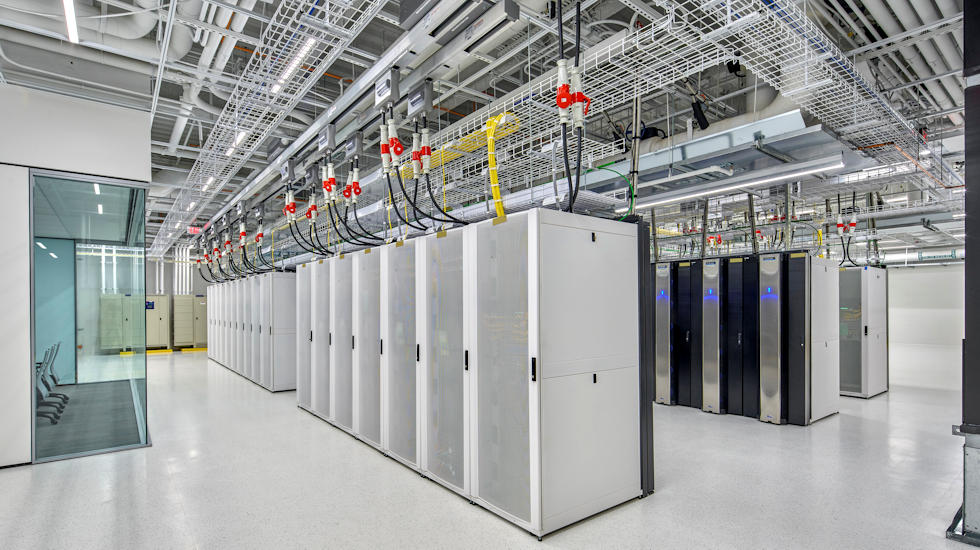DigitalBridge Group, Inc. (NYSE: DBRG) has undergone significant change since Marc Ganzi became president and CEO in July 2020 and began implementing the task of transforming the company into a pure-play digital infrastructure REIT.
In a breakneck capital deployment move, the company sold its legacy real estate holdings in hotels, offices, health care facilities, retail centers, and warehouses to exclusively focus on digital assets including cell towers, data centers, fiber, small cells, and edge infrastructure.
“New management has been in the chair now for six quarters,” Ganzi, a member of the Nareit 2022 Advisory Board of Governors, says. “We’ve rotated $73 billion of assets, selling $40 billion of traditional real estate and building $33 billion in digital holdings. That’s a pretty significant asset rotation.”
DigitalBridge’s current market value is around $5 billion, roughly double from a year ago. Under Ganzi’s leadership, the company’s share price has also more than tripled. For the third quarter of 2021, the company reported total consolidated revenues of $252 million, more than double the same period a year earlier.
DigitalBridge has also grown to $40 billion of digital assets under management, making it one of the world’s largest dedicated digital infrastructure firms. As part of the pivot, Ganzi is aggressively competing to help build the nation’s ultra-fast 5G wireless network, which will need vast amounts of new fiber and transmission infrastructure.
The company’s shift in focus is opportune given that President Joe Biden signed a $1 trillion infrastructure spending bill into law in November. The bill designates $65 billion to expand the nation’s broadband access—a priority during the pandemic when millions of Americans were forced to work and study from home, many without reliable internet access.
Ric Prentiss, managing director at Raymond James & Associates, says DigitalBridge’s future could benefit from the infrastructure bill. “A lot of money is being raised that will help create digital infrastructure and build fiber deeper into the U.S. as well as nationwide 5G networks. That’s going to be a decade-long path.”
Prentiss believes investors will support DigitalBridge’s transformation to a pure-play digital infrastructure REIT. “Private investors, pension funds, sovereign money get it,” he notes. “They see that wireless towers, data centers, and other digital infrastructure are very long-lived assets with big-revenue contracts, and that they’re absolutely essential for the world to be connected.”
Also, when it comes to environmental, social, and governance (ESG) criteria that investors are looking for today, DigitalBridge “checks a lot of the social boxes of trying to make sure we bridge the digital divide,” Prentiss adds.
Pandemic-Fueled Growth
Ganzi is no stranger when it comes to digital infrastructure. In 2003, he founded Global Tower Partners, one of the largest privately owned tower companies in the U.S. The company was acquired by American Tower Corp. (NYSE: AMT) in 2013 for $4.8 billion.
Ganzi went on to launch Digital Bridge Holdings LLC, which later merged with Colony Capital in July 2019 in a $325 million deal. He took over as CEO of the combined company in July 2020 to accelerate the digital transformation strategy, replacing long-time Colony CEO Thomas Barrack. Ganzi rebranded Colony to DigitalBridge in June 2021 to better reflect the new direction.
By the time of the rebranding, cloud-based computing platforms like Zoom, Microsoft Teams, Google Meet, and Amazon Web Services had all seen an explosion of growth. “These digital businesses just took off like a rocket ship, but what everybody forgets is that to make those things work you need the intrinsic plumbing behind it,” Ganzi explains.
As capacity and demand increased during the pandemic, demand for DigitalBridge’s data center leasing jumped more than 35%. Demand for space on its cell towers increased 12%, and demand for its fiber network rose nearly 20%.
“We had to build more cell towers and more data centers and dig more fiber out,” Ganzi says. “All of these verticals were growing because it was this support system that enabled the world to stay functioning. It has been one of the fastest-growing moments in time for data centers, cell towers, fiber, and small-cell infrastructure.”
Looking ahead, DigitalBridge sees a continuation of the vast opportunities in digital infrastructure driven by 5G technology, the Internet of Things (loT), cloud computing, artificial intelligence (AI), and edge computing.
Path to Pure Play
When Digital Bridge Holdings merged with Colony in 2019, Colony was a dividend-focused diversified REIT that lacked a strategic direction, Ganzi explains.
“It was very focused on delivering a high-performance dividend to shareholders but really didn’t have a tremendous amount of growth,” Ganzi says. It invested in real estate asset classes, many of which were suffering from disintermediation. “I knew that when we merged our businesses, we had a host of challenges ahead of us. And I took over right in the middle of the pandemic.”
One of the biggest challenges was over-leverage. Ganzi inherited a balance sheet that was levered at about 14 times earnings before interest, taxes, depreciation, and amortization (EBITDA.) The company had a “pretty significant cost structure,” he points out, with about $300 million of G&A costs on a global basis and 27 offices.
However, the company’s digital business was growing about 30% per year. “On one hand, the pandemic was devastating to our hotels, office buildings, mortgage business, and wellness infrastructure business, which all suffered a systemic shock. But the digital infrastructure business was absolutely crushing it,” Ganzi notes.



